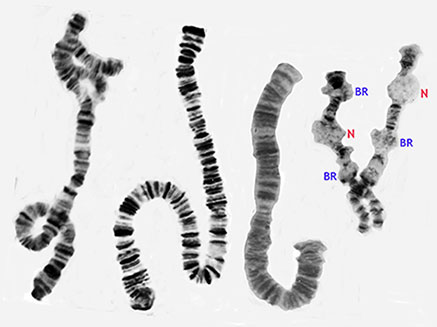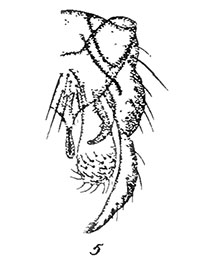

Description of Chironomus obscurus Malloch 1915:
60. Chironomus obscuratus, n. sp.
Male.- Bright green, slightly shining. Head green; scape of antennae yellow, flagellum fuscous, yellow at base, plumes brown, yellowish white at bases; palpi green, brownish apically. Frontal tubercles absent.
Pronotum narrow. Mesonotum with reddish yellow vittae; spots on sternopleura and below wing-base, and the postnotum concolorous with vittae.
Legs green, tibiae and tarsi yellowish, fore tibiae and tarsi and apices of mid and hind tarsi brownish.
Wings clear, veins yellowish, cross vein not darkened. Third and fourth veins ending respectively at about the same distance before and behind apex of wing; cubitus forking distinctly, but not greatly, beyond cross vein. Halteres green or yellowish.
Abdomen yellowish at apex, including the hypopygium. Hypopygium as in Figure 5, Plate XXXIV (below).
Legs slender; fore tarsi without long hairs, basal joint about three fourths longer than fore tibise (78:45) (i.e. LR about 1.78), second joint one eighth shorter than tibiae (40); mid and hind legs with moderately long hairs, their tibiae with the apical combs produced into two points, each point armed with a spur.
Female.- Agrees in color with the male except that the fore tibiae and tarsi are more distinctly browned.
Length, 5-6 mm.
Type locality, Dubois, Ill., April 24, 1914 (C. A. Hart and J. R. Malloch). Paratype from Lilly, Ill, June 11, 1914 (C. A. Hart).
